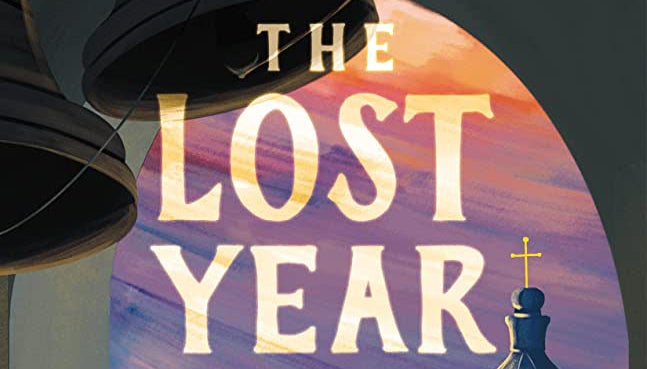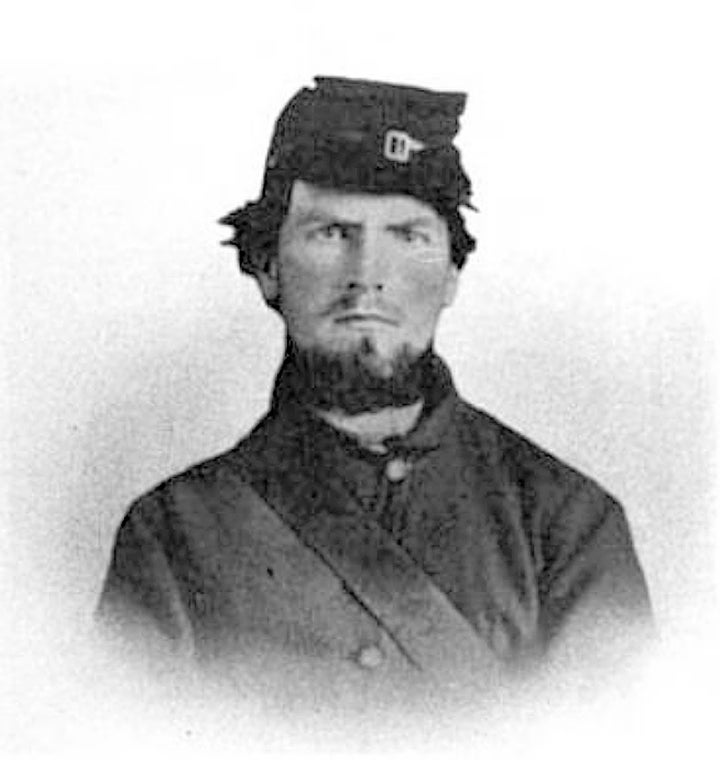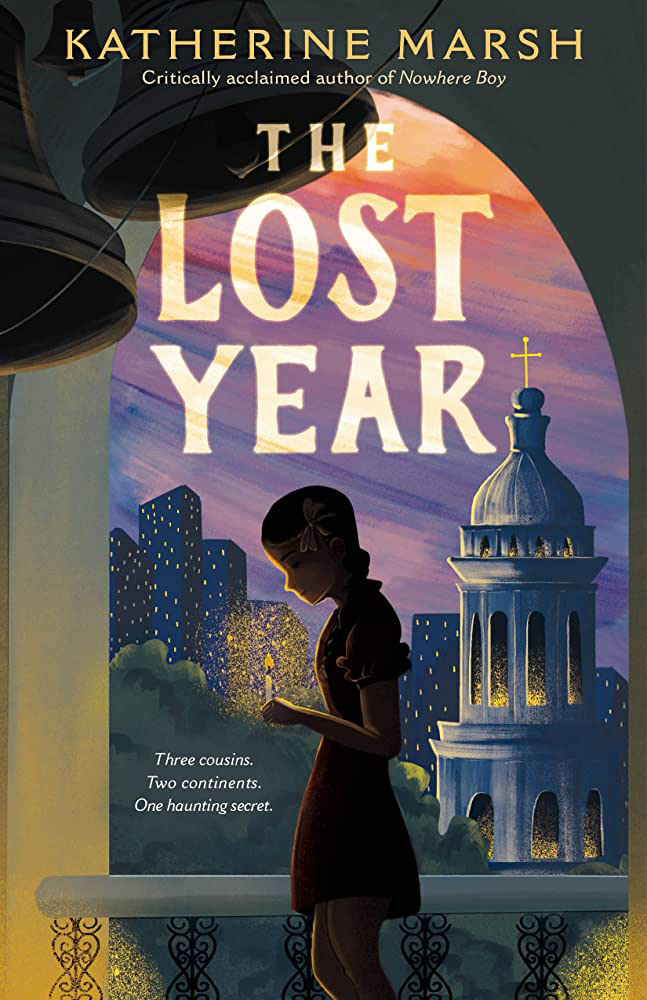
“The Lost Year: A Survival Story of the Ukrainian Famine” by Katherine Marsh
In 1932 to 1933, Ukraine, under the control of the Soviet Union, suffered the deaths of millions of people because of the “Holodomor” or death by hunger.
If the villagers would not turn their land over to the collective farm system, they were imprisoned in camps far away, and their grain and possessions were confiscated. Women and children were left to dig up rotten potatoes and make soup with grass. The Soviets shipped their grain to the larger urban areas where it was used as bribes for the party leadership.
Author, Katherine Marsh had family that immigrated to the United States from Ukraine. They received letters from family left behind that detailed the misery of the suffering, and the desperate attempts to obtain help from those that had the means.
However, American newspapers portrayed the situation using the propaganda provided by the Soviet government that this was only a natural event and that citizens were not starving.
In “The Lost Year,” 13-year-old Matthew lives in New Jersey at the beginning of the COVID-19 pandemic. He believes his family is being overly cautious in restricting him to stay-at-home school. He understands that GG, his 100-year-old great-grandmother is living with them, and they must put her health first. But when his mom decides that Matthew has been spending too much time with his “Zelda” game, she takes away his “switch,” forcing him to focus on helping GG sort through all her storage boxes. Matthew is miserable and isolated from his friends with only schoolwork and GG as distractions.
Matthew’s dad, a journalist, is abroad in Europe and has promised that Matthew can join him on a hiking adventure in Europe during the summer.
Matthew reluctantly opens one of GG’s boxes to discover a photo of two girls. GG says that one is her “foolish” cousin, which is when Matthew realizes that GG had family other than his. GG is unwilling to share her story, but Matthew takes advice from his father about how to “just get people to open up by asking them about the ordinary things in their lives.”
The story floats between Matthew, GG’s cousin as a young girl in Ukraine during 1932 and an Ukranian American girl in New York in that same year. GG comes to accept Matthew as her confident when she discovers they both share a love for chocolate. Matthew slowly learns of the famine, the Holodomor, and of the Russian efforts to spread lies about the Ukraine people.
Matthew decides he should document the story GG is revealing, and asks again for his father’s help. He begins to photograph her photos and papers, and wants to outline his family tree. And then, COVID distracts him, canceling his Europe visit with his dad.
This story intended for middle school students is honest and credible using letters and first-hand accounts from the author’s family. It also lays out the basis of the current Russian attack on Ukraine with the use of disinformation about Ukraine attacking the Russian border. GG’s family secrets add to the plot, and keep you turning the pages. The ending had me near to tears understanding what one woman had sacrificed in order to live.
— Review by Lizz Taylor, Poor Richard’s Books
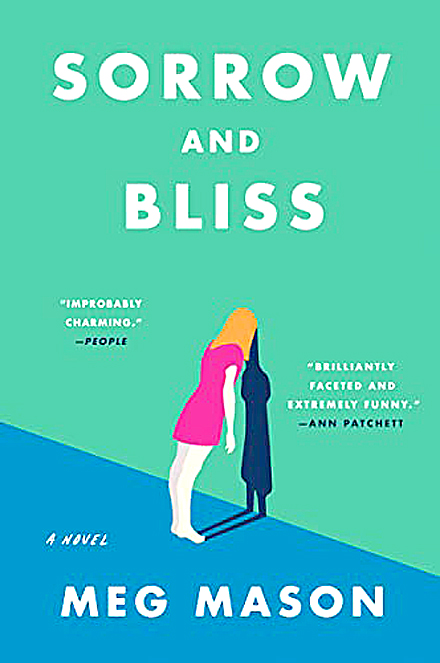
“Sorrow and Bliss” by Meg Mason
Something is not right with Martha. She used to work for Vogue magazine, but now she writes for a website that no one reads. She had lived in Paris, but is now in a gated community in Oxford that she hates, but is not able to say what she doesn’t like. Her marriage to Patrick seems to be one struggle after another and not rewarding for either of them. And then there is the question of children.
Martha’s sister, Ingrid, has lots of children, but they only seem to make her miserable. And Martha isn’t sure she can be a good mother or put up with more misery.
Martha’s family is far from normal with her mother being an eccentric sculptor using found objects for her designs. She drinks too much and has frequent wild parties with her avant-garde friends. Her father is a poet whose first poem was published in the New Yorker. The reviewer called him a “male Sylvia Plath.” His wife said, “Do we need a male Sylvia Plath?” He has not published anything since then.
Martha also has an aunt who tries her best to keep the family patched together by insisting there be holiday celebrations even though her good intentions frequently turn into social disasters.
Martha is wretched, and desolate, and though her symptoms are tolerated by her family, they are also enablers of her mental illness. She is often “sad, cruel to everyone she loves.” Her father can only offer loving affection, while her mother suspects a condition but doesn’t want Martha to be “labeled.” And Ingrid doesn’t have the time to be the support person that Martha needs.
Having known depression in friends, this novel explains how it can turn their world upside-down, hold them back in careers and especially in relationships. Though Martha’s story can be funny at times, it is definitely also tragic. I feel for all the Martha’s in the world and hope they thread their way through the medical world and find the help and support necessary for them to lead satisfying, productive lives.
— Review by Lizz Taylor, Poor Richard’s Books

“The Irish Boarding House” by Sandy Taylor
Set in Dublin, Ireland, in the early 1950s, this novel tells the story of Mary Kate Ryan, who was abandoned by her mother and left with her grandparents when she was just days old. Following their deaths some years later, Mary Kate is evicted from the only home she’s ever known and goes from one boarding house to another and from job to job to support herself. Thinking things would not get any better, she considers suicide, but then receives a letter from her mother’s solicitor informing her that she has inherited a great deal of money. Mary Kate takes an opportunity to purchase a large rundown home and transforms it into a boarding house for single women and girls facing their own challenges.
From here, the reader is introduced to a number of characters from different walks of life, both young and old, with very interesting stories, who end up at the Irish Boarding House. There are twists, turns and surprising connections that emerge between Mary Kate and her boarders.
This is a great book for those looking for a quick, inspirational read where there is a happily-ever-after ending. Fans of Maeve Binchy will enjoy this book.
— Review by Paul Sawyier Public Library staff
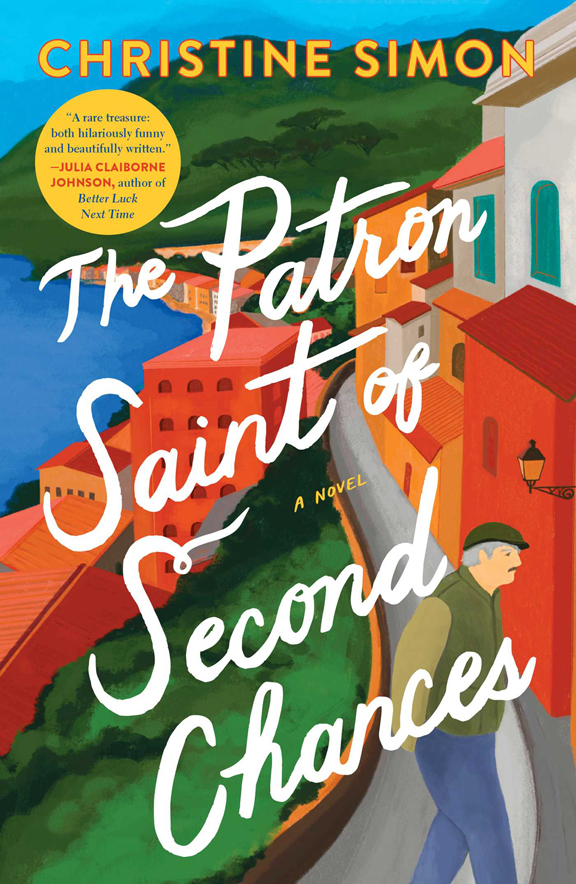
“The Patron Saint of Second Chances” by Christine Simon
Signor Giovannino Speranza, the self-appointed mayor of the small town of Prometto, Italy (which has a population of exactly 212), has a big problem on his hands. Unless he can come up with 70,000 Euros to fix the town’s decaying pipes, the water will be shut off and all of its residents will be forced to relocate. None of the citizens have much money and, rather than tell them about the predicament, Speranza hatches a crazy plan to bring tourists and their money into the community by telling them the famous Italian actor, Dante Rinaldi, will be filming a movie nearby.
The plan backfires quickly when everyone wants to be part of the movie and begin contributing what little money they do have to make it happen. As the lie spirals out of control, Speranza is forced into making more and more decisions until he finally realizes that the only way to keep raising money is actually to make the film. But, what happens if Rinaldi doesn’t show? Or worse, what if he does?
Simon’s debut novel is an enjoyable, funny, heartwarming read. Any book that can make you laugh out loud is a win. Highly recommended.
— Review by Paul Sawyier Public Library staff

